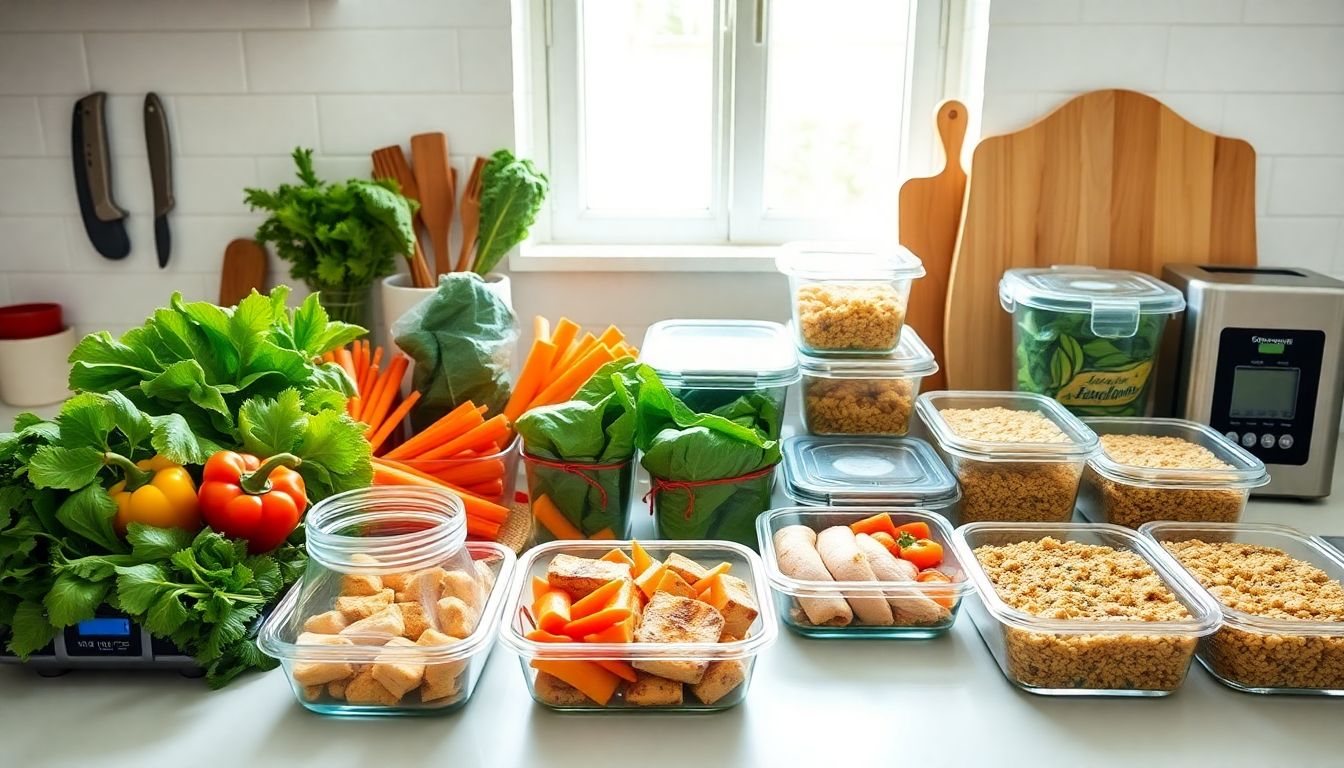
Meal Prepping for Weight Loss on a Budget: Achieve Your Goals Without Breaking the Bank
Introduction
Losing weight doesn’t mean you have to spend huge amounts of money. Planning your meals ahead is a smart way to save both time and cash. Many people find it hard to eat healthy because they worry about costs or lack of time. But with a little planning, you can make healthy eating affordable and simple. Meal prepping helps you stick to your fitness goals without breaking the bank or stressing over daily cooking.
Benefits of Meal Prepping for Weight Loss on a Budget
Cost Savings and Budget Control
Eating out or ordering takeout often adds up fast. Meal prepping allows you to buy ingredients in bulk, saving money in the long run. For example, families that meal prep weekly can save hundreds each month by using store deals and homemade meals. It also helps you control your spending, making it easier to stick to your budget.
Improved Nutritional Quality and Portion Control
Cooking at home means you avoid processed, calorie-dense fast food. Meal prepping helps you balance meals with the right mix of carbs, protein, and fats. Experts say controlling portion sizes is key to losing weight. With pre-measured meals, you’ll avoid overeating and get better nutrition every day.
Time Efficiency and Reduced Food Waste
Cooking in large batches saves time. Instead of cooking daily, you spend a few hours once a week to prepare everything. Plus, smart storage helps you keep leftovers fresh, reducing food waste. Leftovers can be used in new recipes, making your meals more interesting and budget-friendly.
Planning Your Budget-Friendly Weight Loss Meal Prep
Setting Realistic Goals and Calorie Targets
First, figure out your daily calorie needs using online calculators. Know how many calories you need to stay healthy and how many to lose weight. Tailor your meal plan to fit your dietary preferences, like vegetarian or low-carb options.
Creating a Cost-Effective Meal Plan
Pick versatile ingredients that are cheap and easy to cook. Think beans, oats, frozen vegetables, and chicken breasts. Focus on foods that fill you up and provide good nutrition. Here’s a simple weekly plan outline:
- Breakfast: Oats with bananas
- Lunch: Rice, beans, and vegetables
- Dinner: Grilled chicken with roasted sweet potatoes
- Snacks: Hard-boiled eggs or fruit This plan keeps costs low while supporting weight loss.
Shopping Smart and Using Deals
Buy in bulk whenever possible—rice, lentils, and frozen foods are cheaper in large bags. Use store coupons and look for discounts on seasonal produce. Shopping during sales helps you save even more. Frozen fruits and vegetables are just as nutritious as fresh, and they last longer.
Essential Budget-Friendly Meal Prep Strategies
Choosing Affordable, Nutrient-Dense Ingredients
Common superfoods don’t have to cost a lot. Eggs, lentils, and brown rice are full of nutrients and cheap. Frozen options like spinach and berries are convenient and budget-friendly. Nutritionists agree, these foods are top choices for healthy, low-cost eating.
Batch Cooking and Freezing Techniques
Cook large batches of grains, meats, and vegetables at once. Divide them into portions and freeze for later. Always label your containers, so you know what’s inside. Doing this weekly makes meal prep faster and easier, saving you hours each week.
Incorporating Plant-Based Meals
Plant-based proteins like beans, tofu, and chickpeas are cheaper than meat but still filling. Including these in your diet cuts costs and adds variety. Think veggie chili, bean tacos, or lentil soups for tasty, budget-friendly meals with plenty of protein.
Utilizing Simple and Minimalist Recipes
Focus on recipes with just a few ingredients but with bold flavors. No need for fancy sauces or expensive spices. Healthy, budget-friendly spaghetti with marinara, roasted veggies, or stir-fry with frozen vegetables work well. Simplicity saves money and keeps your meals quick to prepare.
Tips for Maintaining Motivation and Consistency
Meal Planning and Scheduling
Use a meal prep calendar or reminder app to stay on track. Keep your meal choices flexible, so you don’t get bored. Mix and match ingredients to keep things interesting and motivated.
Tracking Progress and Adjusting
Use apps or a journal to keep tabs on your weight loss. See what’s working and change it if needed. Adjust portion sizes or try new recipes to avoid plateaus and stay motivated.
Staying Affordable and Creative
Shop for ingredients based on deals and what's available. Swap ingredients to keep meals exciting and fresh. Incorporate new recipes regularly to stay inspired and committed to your goals.
Conclusion
Losing weight while sticking to a budget is entirely possible. The secret is good planning, choosing affordable and nutritious ingredients, and batch cooking. With discipline and smart choices, you can reach your goals without overspending. Meal prepping isn’t just a time-saver—it’s a powerful tool to help you live healthier and feel confident in your journey. Start small, stay consistent, and watch your progress grow!

